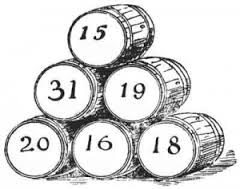 Literature is an art with very different expressions and forms. The novel, the theater or the poetry are literary genres of great tradition. The possibilities of literature are not limited to certain genres, since there are many artistic manifestations within or in relation to literature: the film script, the advertising language, the epistolary genre, the television monologue and a long etcetera. All of them are expressions of the essence of literature, the art of communicating with words.
Literature is an art with very different expressions and forms. The novel, the theater or the poetry are literary genres of great tradition. The possibilities of literature are not limited to certain genres, since there are many artistic manifestations within or in relation to literature: the film script, the advertising language, the epistolary genre, the television monologue and a long etcetera. All of them are expressions of the essence of literature, the art of communicating with words.
Among the media, the written press is one of the best known. In the daily press there are several fixed sections: local, national and international news, reports ... One of the most literary sections is the journalistic column. Normally each newspaper or newspaper has on its staff some collaborators who periodically write their opinion on some current issues. These writings are called columns because the format in which they are presented is framed in a column. Writers who contribute to newspapers are known as columnists. The length of the writing is usually short and with a notable literary value. In this type of section, news with a rigorous and precise value is not given. The main idea of the journalistic column is the reflection on some aspect of the present time. As a literary genre, the column allows full freedom to the writer, since it is not subject to the conditions of the news. Typically, a very concise and eye-catching title is used to pique the interest of the reader. The thematic approaches of the column can be multiple, although there are two general trends: dealing with general or more specialized topics. In the latter case, we would be mentioning the authors who write about a specific topic or aspect: sport, bullfighting, fashion ... The traditional section of the journalistic column currently has a variant within the new technologies. This is what happens with blogs, in which an author (with greater or lesser fame) writes with a format very similar to the traditional column.
The newspapers of great circulation have prestigious columnists as collaborators, who sign the columns so that the reader recognizes their favorite author; a circumstance that does not happen in other sections of the press. The reader of the written press evaluates the quality of a newspaper based on some of its characteristics. One of them is the level of recognition of the columnists.
In the history of literature there have been great columnists (the word signatures is also used to refer to writers who use this genre). Among the most famous, Vargas Llosa can be highlighted today, Zola as an example of journalism of social denunciation or Hemingway as an exponent of American culture.









